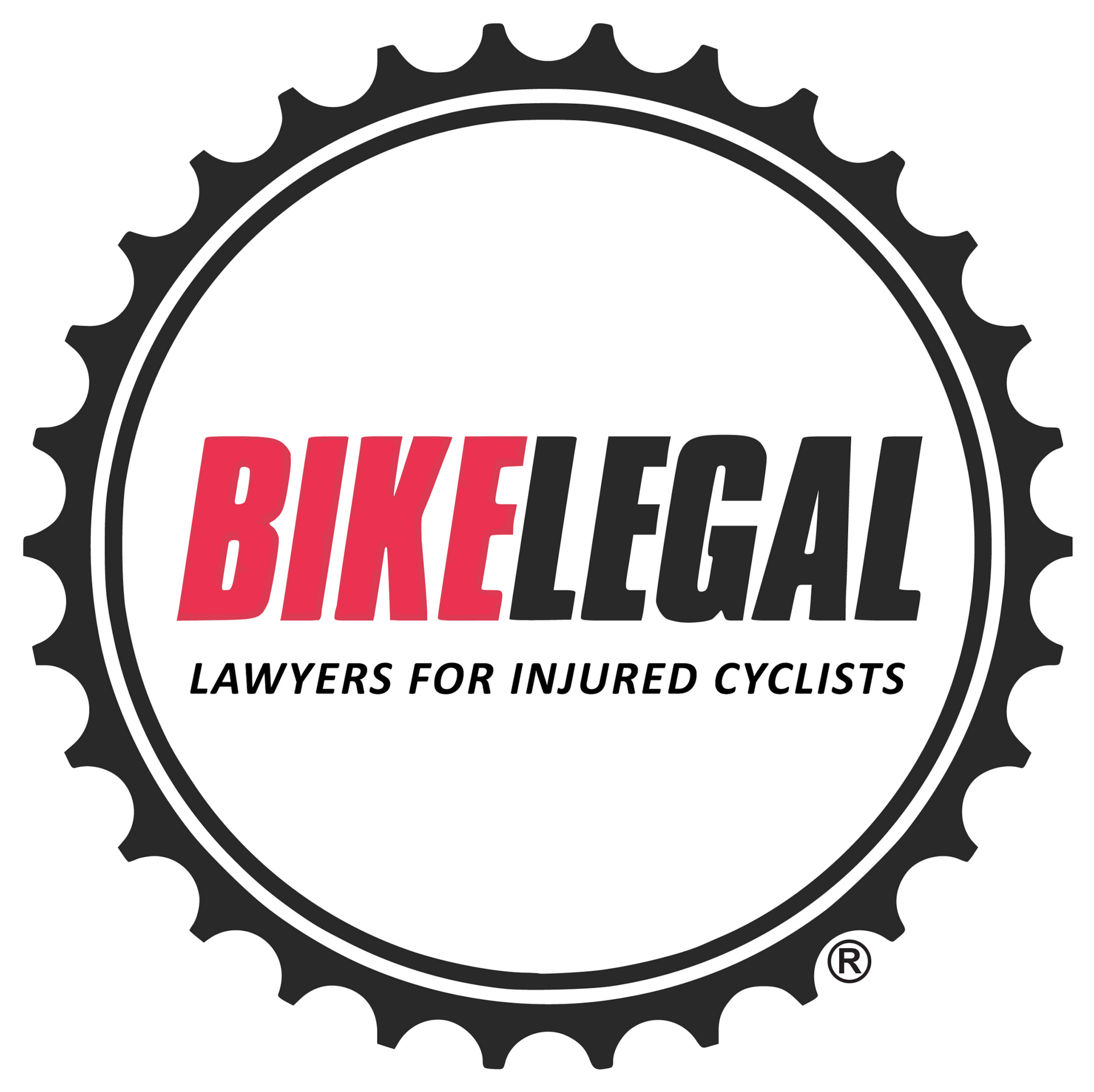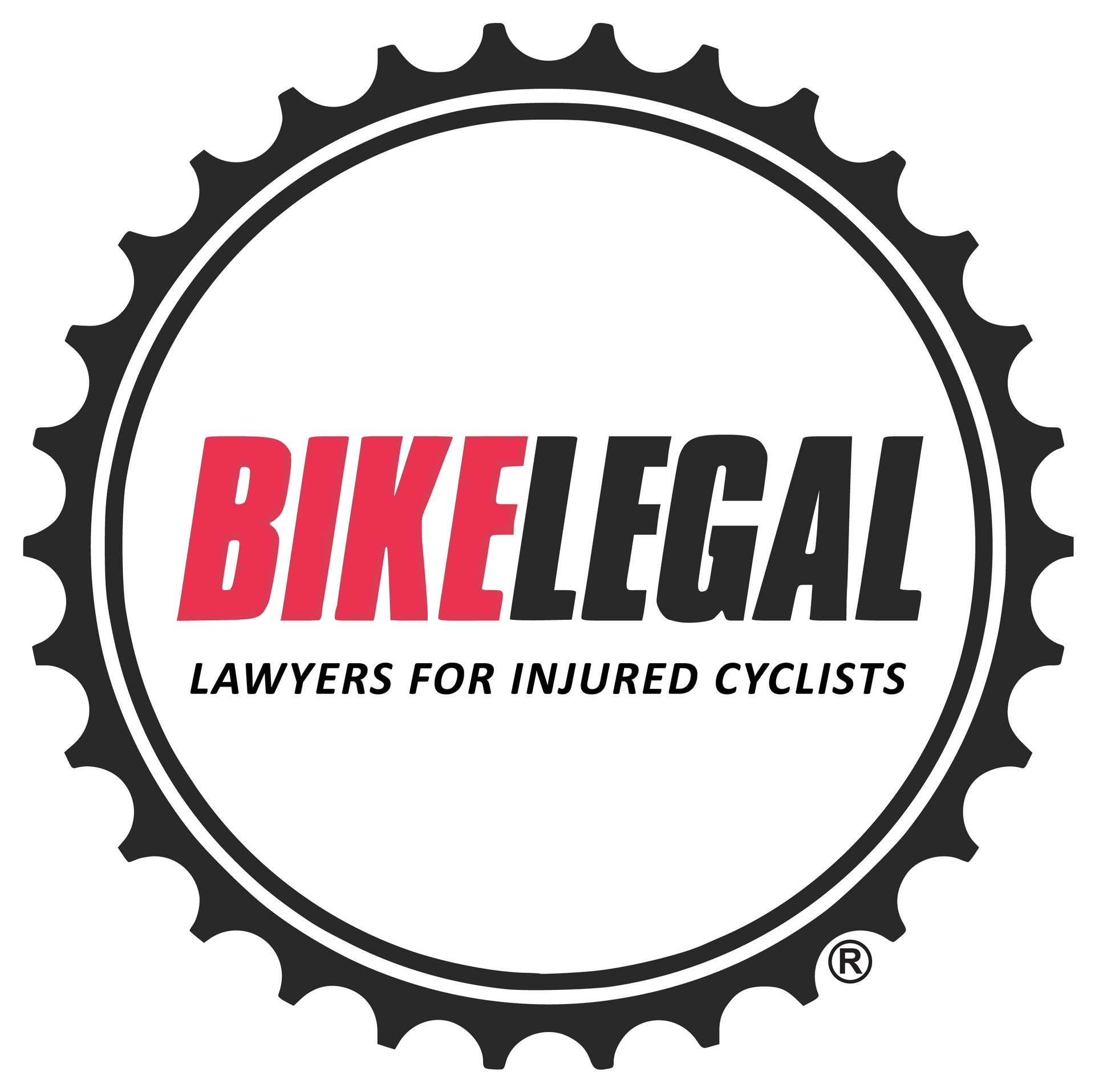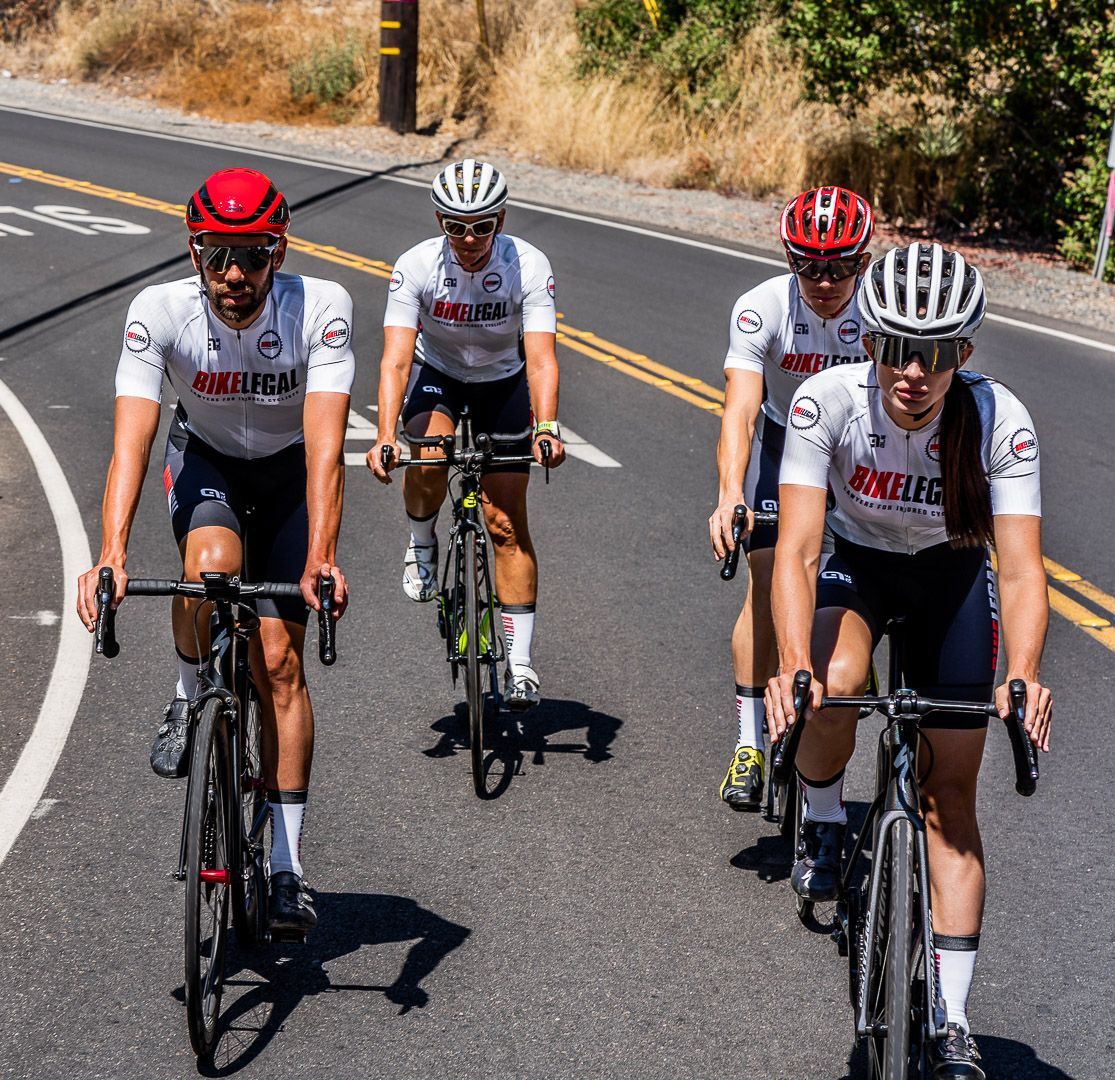What Is a Bike Box at Intersections And How Should Cyclists Use Them?
Follow us on
social media!
Ever get that feeling of "Will this car see me?" when you're waiting at a red light? Bike boxes are designed to tackle that exact fear. They're like VIP areas for cyclists at intersections, putting you front and center where everyone can see you. In this guide, we'll break down exactly how bike boxes work and why they're a game-changer for safe cycling.
Here's what we'll cover:
- What bike boxes are and how they work
- Why they make intersections safer for bicyclists (and pedestrians)
- How to use them effectively
- Where to find them (and how to get them installed in your city)
- The pros and cons of bike boxes
Let's find out.
TL;DR - Bike Boxes in a Nutshell
- What they are: Dedicated spaces at intersections for cyclists to wait in front of cars, improving visibility and safety.
- Why they matter: Reduce conflicts with cars, make left turns easier, and help keep crosswalks clear for pedestrians.
- How they work: Enter the box at a red light, position yourself in front of the cars, and proceed when the light turns green.
- Where to find them: Mostly in cities, but becoming more common in suburbs and rural areas, too.
- Want them in your town? Advocate for them by contacting your local officials and working with cycling groups.
What Is a Bike Box?
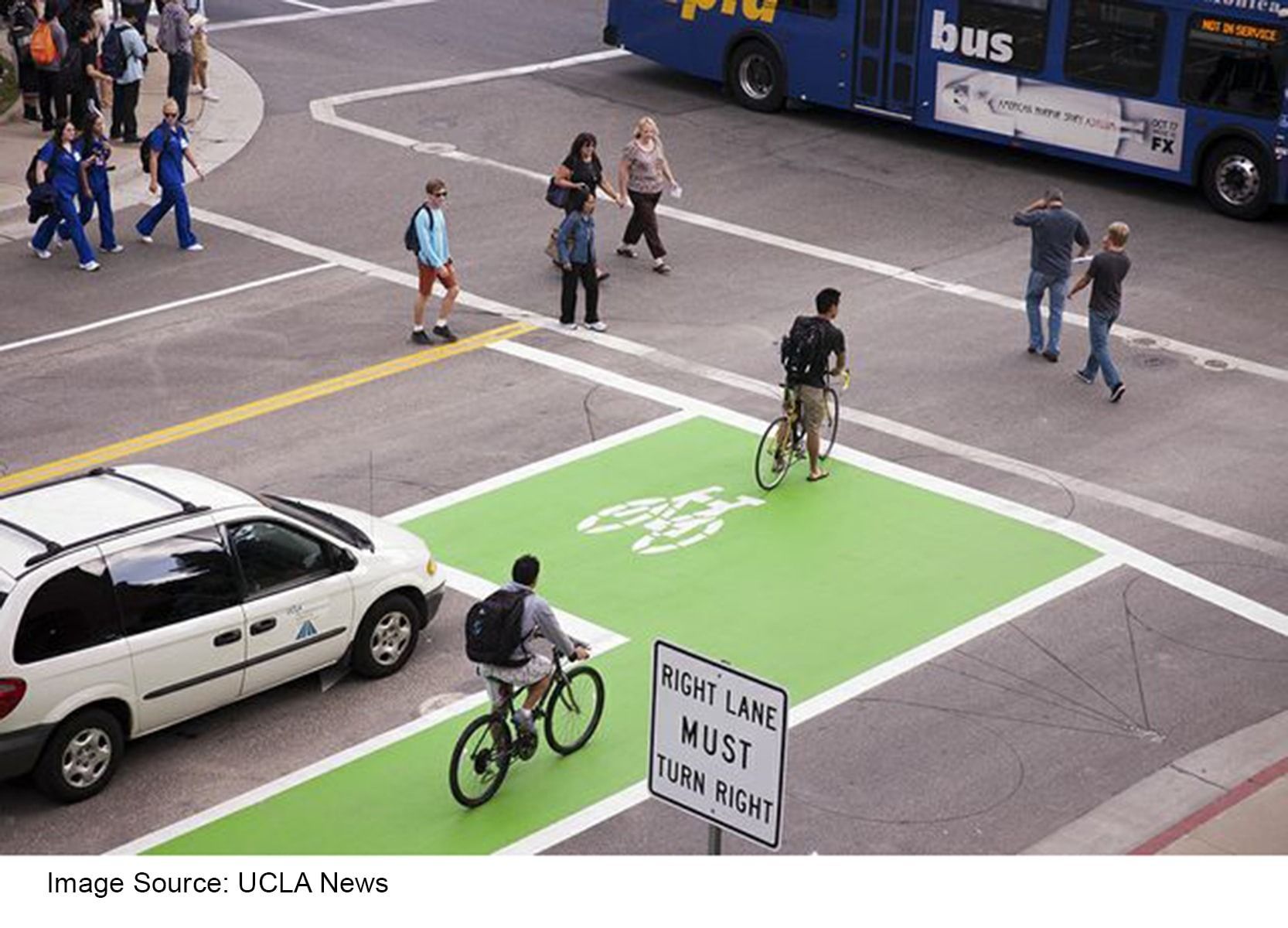
A bicycle box is a designated area for cyclists to wait at a signalized intersection. It's typically marked by a green-painted square at the front of the traffic lane, and it's designed to improve visibility and safety for cyclists.
Bike boxes help prevent those scary "right hook" accidents where a driver turns right and cuts off a cyclist going straight. How? By putting you right in the driver's line of sight. Plus, it gives cyclists a head start when the light turns green, making it easier to merge into traffic.
How Bike Boxes Work
Here's a step-by-step breakdown of how bike boxes work:
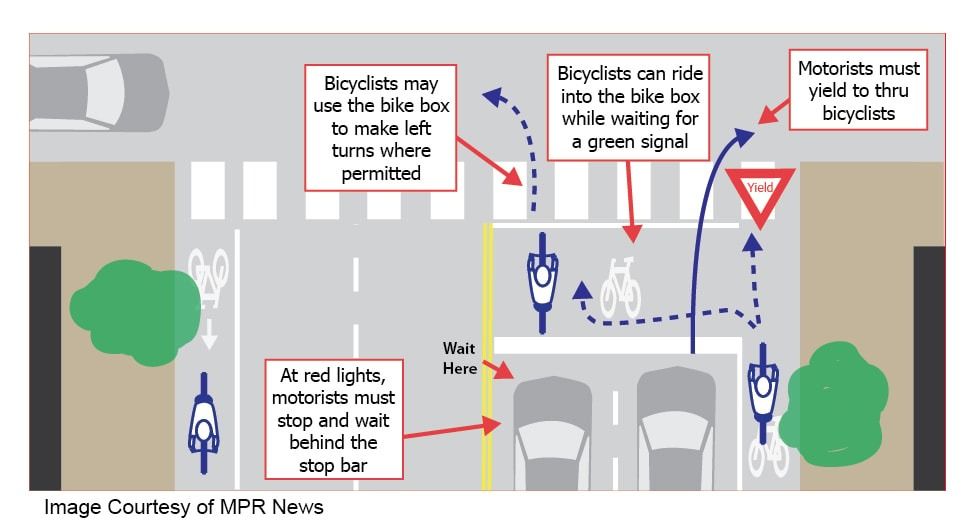
- Approach: As you approach a signalized intersection with a bike box, position yourself within the marked area when the light turns red.
- Visibility: By being in the bike box, you're more visible to drivers, especially those turning right. This reduces the risk of right-hook accidents.
- Priority: When the light turns green, cyclists in the bike box have a clear advantage. They can proceed straight through the intersection or make a left turn, minimizing conflicts with turning vehicles.
Bike boxes are designed to be super intuitive, both for cyclists and drivers. Here's the lowdown:
- Eye-Catching Design: Most bike boxes are painted a bright color (usually green) to make them stand out. They're also clearly marked with symbols and lines to show where cyclists should position themselves.
- Red Light, Green Light: When you approach a bike box at a red light, simply enter the box and stop your bike in front of the cars. This puts you in a prime spot for visibility.
- Go Time: When the light turns green, you can proceed straight through the intersection or make a turn. Since you're already ahead of the cars, it's much safer to merge into traffic.
Pro Tip: Always be aware of your surroundings, even when you're in a bike box. Some drivers may not be familiar with how they work, so it's always best to proceed with caution.
Signage and Markings
To make things even clearer, bike boxes often have extra signage:
- No Turn on Red: In cities that allow right turns on red, you'll often see "No Turn on Red" signs at intersections with bike boxes. This prevents drivers from turning right and cutting off cyclists going straight.
- Bike Lane Arrows: Arrows within the bike box and on the road help guide cyclists in the right direction, whether they're going straight or turning.
Bike boxes are designed to improve safety, but they're not foolproof. Always be alert and follow traffic laws, even when you're in the box.
A Brief History of the Bike Box
Believe it or not, bike boxes aren't a newfangled idea. They actually originated in Europe – specifically in cycling havens like Denmark and the Netherlands – way back in the 1980s and 90s. These countries were pioneers in creating cycling-friendly cities, and bike boxes were a key part of their plan.
Studies quickly showed that bike boxes were making a real difference in cyclist safety, especially at busy intersections. Word got out, and the idea started to catch on across the globe.
Bike Boxes in the U.S.
Portland, Oregon, and New York City were among the first U.S. cities to embrace bike boxes, with Portland leading the way in 2008. Today, you'll find them popping up in cities all over the country, from Austin to San Francisco.
Fun Fact: Portland State University conducted a study on bike boxes and found that they significantly reduced conflicts between cyclists and motorists. They even made both cyclists and drivers feel safer at intersections.
While bike boxes are most common in urban areas with lots of cyclists, they're starting to appear in suburbs, too. As more and more people choose to bike, it's likely that bike boxes will become an even more common sight on our roads.
Why Bike Boxes Improve Safety
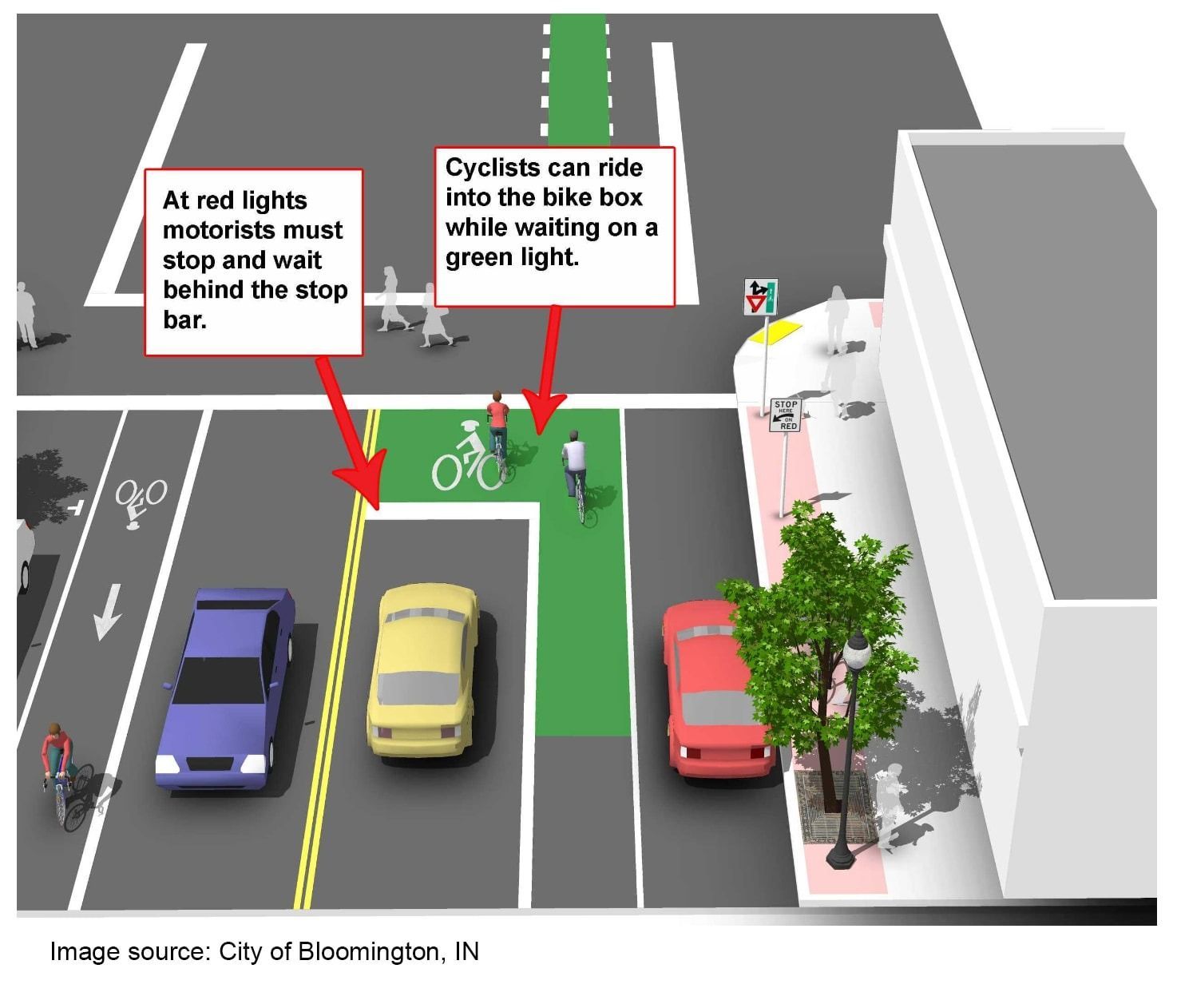
Bike boxes work. In fact, a Portland State University study was done that evaluated bike boxes at ten Portland intersections, aiming to improve cyclist visibility and reduce "right-hook" conflicts. By analyzing video footage and surveying cyclists and motorists, researchers assessed the effectiveness, compliance, and perceived safety of green and uncolored bike boxes at signalized intersections.
Here's what they found:
- Conflict Reduction: After installing the bike boxes, observed conflicts between motor vehicles and cyclists decreased, even as the volume of cyclists and right-turning motor vehicles increased. Statistical models predicted fewer conflicts with the presence of bike boxes, especially as right-turning vehicle traffic rose.
- High Compliance with Bike Boxes: Observations showed that 73% of motorists stopped outside the bike box area without encroaching. Encroachment into pedestrian crosswalks also fell significantly at bike box intersections compared to control sites, highlighting improved compliance with road markings.
- Improved Yielding to Cyclists: Motorists at bike box intersections were more likely to yield to cyclists, and an improvement in behavior was noted at these intersections compared to control sites.
- Perceptions of Safety: The surveys indicated that both motorists and cyclists felt safer with bike boxes. Over three-quarters of cyclists believed the boxes improved intersection safety, and a majority of surveyed motorists agreed, even among those who did not identify as cyclists.
- Mixed Results on Lane Encroachment: While bike boxes significantly reduced encroachment into pedestrian crosswalks, they had varying effects on motorist encroachment into the bicycle lanes themselves.
- Color Effect Uncertain: The study found it challenging to draw definitive conclusions on the impact of green-colored bike boxes due to differences in traffic volumes and site contexts.
Overall, this study by Portland State University suggests that bike boxes can reduce cyclist-motorist conflicts and enhance perceived safety at intersections, indicating that they may be a valuable component of urban cycling infrastructure.
On top of the study's findings, there are other benefits evident from bike boxes:
- Pedestrian Benefits: Bike boxes also improve pedestrian safety by reducing vehicle encroachment into crosswalks
- Better Intersection Navigation: Cyclists are given priority and clear visibility at intersections, reducing the likelihood of motor vehicles being blocked during green light phases.
With all these benefits, it's no wonder that cities are increasingly adding bike boxes to their streets. It's a win-win for everyone – cyclists, drivers, and pedestrians alike.
How to Use a Bike Box Like a Pro
Bike boxes are pretty straightforward, but there are a few things you can do to make sure you're using them safely and effectively:
- Stick to the Bike Lane: Always approach the bike box from the designated bicycle lane. Don't weave through traffic or ride on the sidewalk.
- Front and Center: When you stop in the bike box, position yourself directly in front of the cars. This maximizes your visibility and reduces the risk of getting cut off.
- Crosswalk Courtesy: Be mindful of pedestrians. Never block the crosswalk with your bike.
- Left Turn Pro: Bike boxes are especially helpful for making left turns. Use the box to position yourself for a safe and easy turn.
Pro Tip: Make eye contact with drivers whenever possible, especially those waiting to turn right. This helps ensure they see you and are aware of your intentions.
Even if you're in the right, it's always better to be safe than sorry. If you see a driver who seems confused or isn't paying attention, it's okay to wait a few extra seconds before proceeding.
Bike Boxes: A Driver's Guide to Sharing the Road
Bike boxes are designed to keep cyclists safe, but they require cooperation from drivers, too. Here's how you can do your part:
- Respect the Box: When you approach a bike box at a red signal phase, stop your car behind the line. Don't encroach on the cyclist's space, even if there doesn't seem to be anyone around.
- Yield the Right of Way: When the light turns green, yield to cyclists who are going straight through the intersection. This is especially important if you're turning right.
- Stay Alert: Be aware of cyclists around you, especially at intersections. Check your mirrors and blind spots before making any turns.
Cyclists are vulnerable road users. By respecting bike boxes and sharing the road responsibly, you can help prevent accidents and keep everyone safe.
Also Read: Cycling Laws in the United States
Avoiding Encroachment: Why It Matters
It's crucial for drivers to stay out of the bike box. Here's why:
- Visibility: When cars enter the bike box, they block cyclists from view, increasing the risk of collisions with road bikes.
- Confusion: Encroaching on the two-stage left turn bike box can confuse cyclists and make it unclear who has the right of way.
- Safety Hazard: Drivers in the two-stage bike box can create a dangerous situation for cyclists, especially those making left turns.
If you accidentally enter a bike box, simply back up carefully until you're behind the line. It's a simple mistake that anyone can make, but correcting it quickly can prevent a potential accident.
Bike boxes are like mini pedestrian crosswalks for cyclists. Just as you wouldn't drive through a crosswalk full of people, you shouldn't drive through a bike box.
Read Next: 11 Hand Signals Every Cyclist Must Know on the Road
Where Bike Boxes Are Used
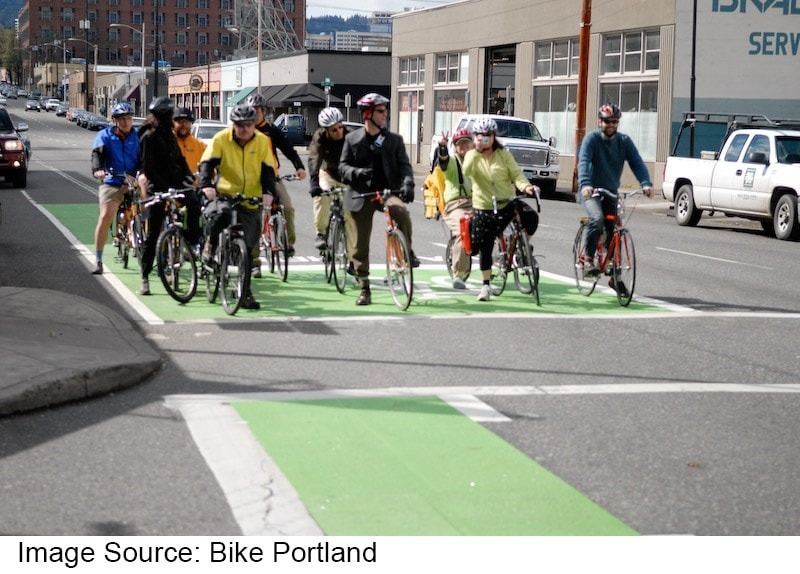
As you might expect, bike boxes are most common in cities with lots of cyclists and busy traffic. Think of places like:
- Portland, Oregon
- New York City
- San Francisco
- Seattle
- Minneapolis
- Boston
- Chicago
- Austin
These cities have all embraced bike boxes as a way to make their streets safer and more bike-friendly.
Read Next: Top 10 Epic Bike Routes in the San Francisco Bay Area
Bike Boxes in Suburbs and Rural Areas
While less common in rural areas, bike boxes can still be a valuable tool for improving bicycle safety at busy intersections or where cycling paths cross major roads. Some suburban areas are also starting to incorporate bike boxes as part of their efforts to create more bike-friendly communities.
Why the Urban Focus?
Cities tend to have high volumes of cyclists and more complex traffic patterns, making bike boxes a particularly effective solution for improving pedestrian safety at intersections. But as cycling becomes more popular in all areas, we can expect to see bike boxes popping up in more and more places.
If you live in an area without bike boxes and think they could improve bike safety in your community, reach out to your local transportation department or city council. You can also connect with cycling advocacy groups in your area to help spread awareness and advocate for change.
Want Bike Boxes in Your City? Here's How to Make it Happen
Getting bike boxes installed often requires funding and a bit of grassroots action. Here's the lowdown:
Funding the Future of Cycling
Where does the money for bike boxes come from? Often, it's through federal programs like:
- Transportation Alternatives Program (TAP)
- Surface Transportation Block Grants (STBG)
These programs are designed to support projects that make communities more walkable and bike-friendly. Cities can also tap into funds dedicated to initiatives like Vision Zero bike safety and Complete Streets, which prioritize safety for all road users.
Become a Green Bike Box Advocate
Want to see more bike boxes in your city? Here's how you can make a difference:
- Join Forces: Connect with local cycling advocacy groups. They often have resources and expertise to help you make your case.
- Gather the Data: Present data on traffic patterns and accident statistics to your city's transportation department. This helps demonstrate the need for bike boxes in specific locations.
- Speak Up: Attend city council or planning meetings and voice your support for bike boxes. The more people who speak up, the more likely it is that change will happen.
- Get Businesses on Board: Local businesses can be powerful allies. Safer cycling infrastructure can bring in more customers and improve interseciton bike safety for everyone.
Change doesn't happen overnight, but by being proactive and working together, you can help make your city a safer and more enjoyable place to ride.
Bike Boxes: Weighing the Pros and Cons
Like any traffic design, bike boxes have their upsides and downsides. Let's take a look:
Bike Box Benefits
- Safety First: Bike boxes significantly increase visibility for cyclists, making them less likely to get hit by cars, especially those pesky right-turning ones.
- Pedestrian-Friendly: They help keep crosswalks clear for pedestrians by preventing cars from creeping in.
- Smooth Operator: Bike boxes make it easier for cyclists to navigate intersections, especially when making left turns.
The Not-So-Good Stuff
- Rule Breakers: Some drivers might not understand how bike boxes work or simply choose to ignore them, which can reduce their effectiveness.
- Rush Hour Blues: Bike boxes can get crowded during peak traffic times, which can be a bit chaotic.
- Education is Key: Both drivers and cyclists need to be educated about how to use bike boxes properly. Lack of awareness can lead to confusion and accidents.
Overall, the pros of bike boxes definitely outweigh the cons. They're a valuable tool for making our streets safer for everyone, but they work best when everyone knows how to use them correctly.
Also Read: A Cyclist's Guide to Handling Road Rage
Ready to Ride Safer? Let's Get You in a Bike Box
Bike boxes are a simple but effective way to make our streets safer for cyclists. By understanding how they work and using them correctly, we can all contribute to a more bike-friendly world.
Here are the key takeaways:
- Bike boxes increase cyclist visibility and reduce turning conflicts between cyclists and motorists.
- They're most common in urban areas but can be beneficial in any location with busy intersections.
- Both cyclists and drivers need to understand how to use bike boxes properly.
- You can advocate for bike boxes in your community by working with local organizations and contacting your city officials.
At Bike Legal, we're passionate about protecting the rights of cyclists. If you've been injured in a bicycle accident, don't hesitate to contact us for expert legal advice and representation. We're here to help you navigate the aftermath of an accident and get the compensation you deserve.
